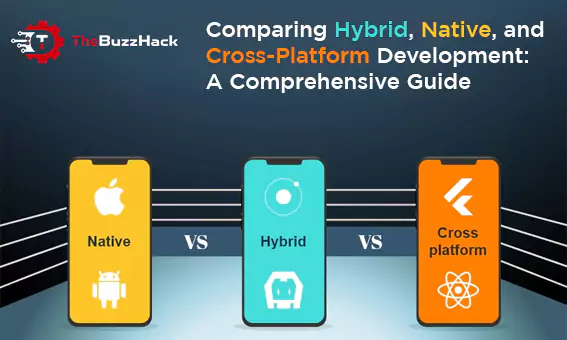
Comparing Hybrid, Native, and Cross-Platform Development: A Comprehensive Guide
Amidst the ever-changing realm of digital connectivity, businesses worldwide are actively seeking ways to engage their target audience. The crux of this pursuit lies in crafting user-friendly websites and mobile applications that enable direct interaction with customers at the mere click of a button. For those lacking a technical background, navigating the intricate world of mobile application development may seem overwhelming. This blog aims to demystify the process by delving into three fundamental approaches: Native, Hybrid, and Cross-Platform development.
I. Native App Development:
Native app development is a customized approach tailored for a specific operating system. This method employs a unique programming language, along with tools and technologies supported by the chosen system. The allure of native development lies in its capacity to unlock the full potential of a device’s hardware and software, delivering a seamless and high-performance user experience.
However, a notable drawback is platform exclusivity. An application developed for iOS, for instance, will not seamlessly transition to Android. This dichotomy necessitates separate development efforts for each platform, involving distinct programming languages and tools.
Tools for Native Android App Development:
Native Android app development entails harnessing the Android Software Development Kit (SDK), which includes crucial tools like Android Studio, Android IDE, and IntelliJ IDEA. Android Studio, the official Integrated Development Environment (IDE), offers features specific to Android development, including a visual layout editor, code editor, and built-in emulator. IntelliJ IDEA, a general-purpose IDE, is also a viable choice for Android app development.
Tools for Native iOS App Development:
On the iOS front, developers rely on tools such as Xcode, Appcode, and Atom. Xcode, provided by Apple, is a comprehensive development environment supporting app creation for iOS, macOS, watchOS, and tvOS. Appcode, a commercial IDE, is based on the open-source Xcode project, while Atom, a versatile text editor, caters to iOS development and various other programming languages.
II. Hybrid Platform Mobile App Development:
Hybrid platform development bridges the gap between Native and Cross-Platform approaches. This method involves creating mobile applications that can seamlessly run on multiple platforms, such as Android and iOS. Achieved through cross-platform development frameworks, hybrid apps enable developers to write code once and deploy it across various platforms.
Advantages of Hybrid Platform Development:
a. Faster and easier development compared to native apps.
b. Compatibility with multiple platforms ensures broader reach.
c. Access to native APIs provides additional features not available in web apps.
Drawbacks of Hybrid Platform Development:
a. Reduced speed and responsiveness compared to native apps.
b. Increased difficulty in debugging and maintenance.
c. Potential compatibility issues with some devices.
III. Cross-Platform Mobile App Development:
Cross-platform development takes a broader approach, aiming to create mobile apps compatible with various operating systems. This method involves using specific tools such as React Native, Xamarin, and Flutter, allowing developers to deploy the same code on both iOS and Android devices.
Tools for Cross-Platform App Development:
a. React Native: A popular framework developed by Facebook, enabling the creation of native-like apps using React and JavaScript.
b. Xamarin: A Microsoft-owned framework allowing developers to use C# for cross-platform app development.
c. Flutter: Developed by Google, Flutter utilizes the Dart programming language to create visually appealing, fast, and natively compiled applications.
Benefits and Considerations:
a. Code Reusability: The ability to use the same code across different platforms.
b. Broader Reach: Cross-platform apps can run on various operating systems, reaching a wider audience.
c. Development Efficiency: Streamlined development processes, reducing time and effort.
IV. Choosing the Right Approach:
When deciding between Native, Hybrid, and Cross-Platform development, the choice hinges on project priorities. For cost-effective solutions and broader reach, Hybrid and Cross-Platform development offer distinct advantages. However, if optimal performance, particularly in terms of UI and UX, is a priority, Native development stands out.
Conclusion:
In the dynamic landscape of mobile application development, each approach—Native, Hybrid, and Cross-Platform—brings its unique set of advantages and considerations. At Purgesoft, we recognize the importance of catering to diverse development needs. Our team of technology experts stands ready to guide you through the entire process, ensuring your mobile application aligns seamlessly with your business objectives. In the fast-paced digital era, connecting with your audience is paramount. Whether you opt for the cost-effective versatility of Hybrid and Cross-Platform development or prioritize the top-notch performance of Native development, the key is to align your choice with your business goals.
Read More: Unlocking Python Mobile App Development: Discover Key Benefits


